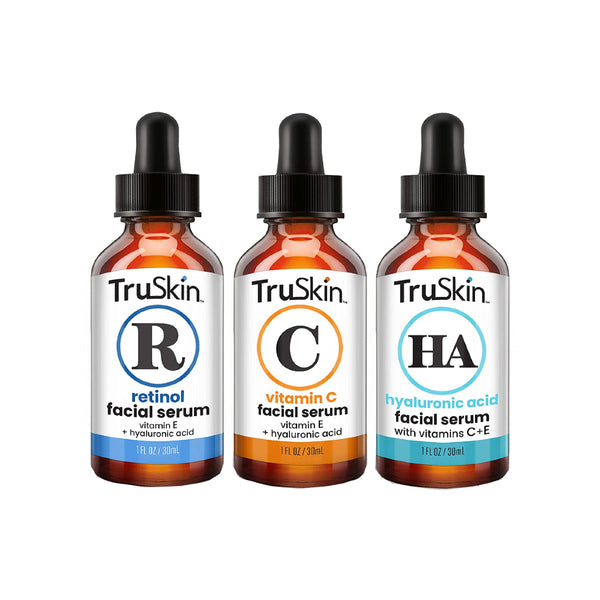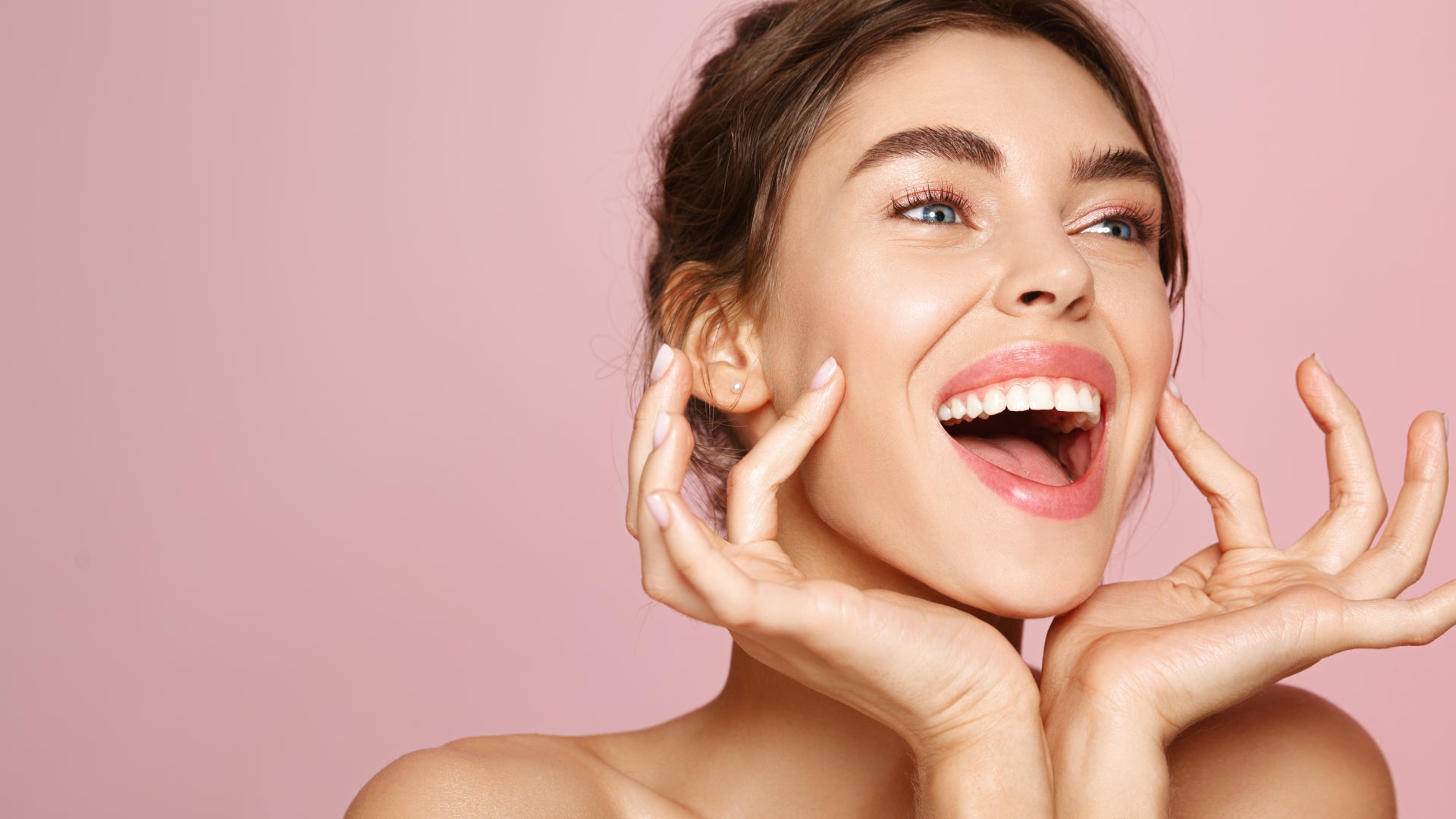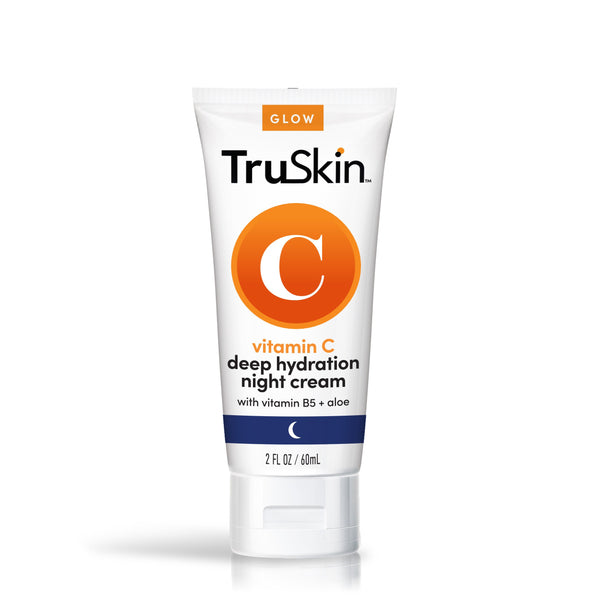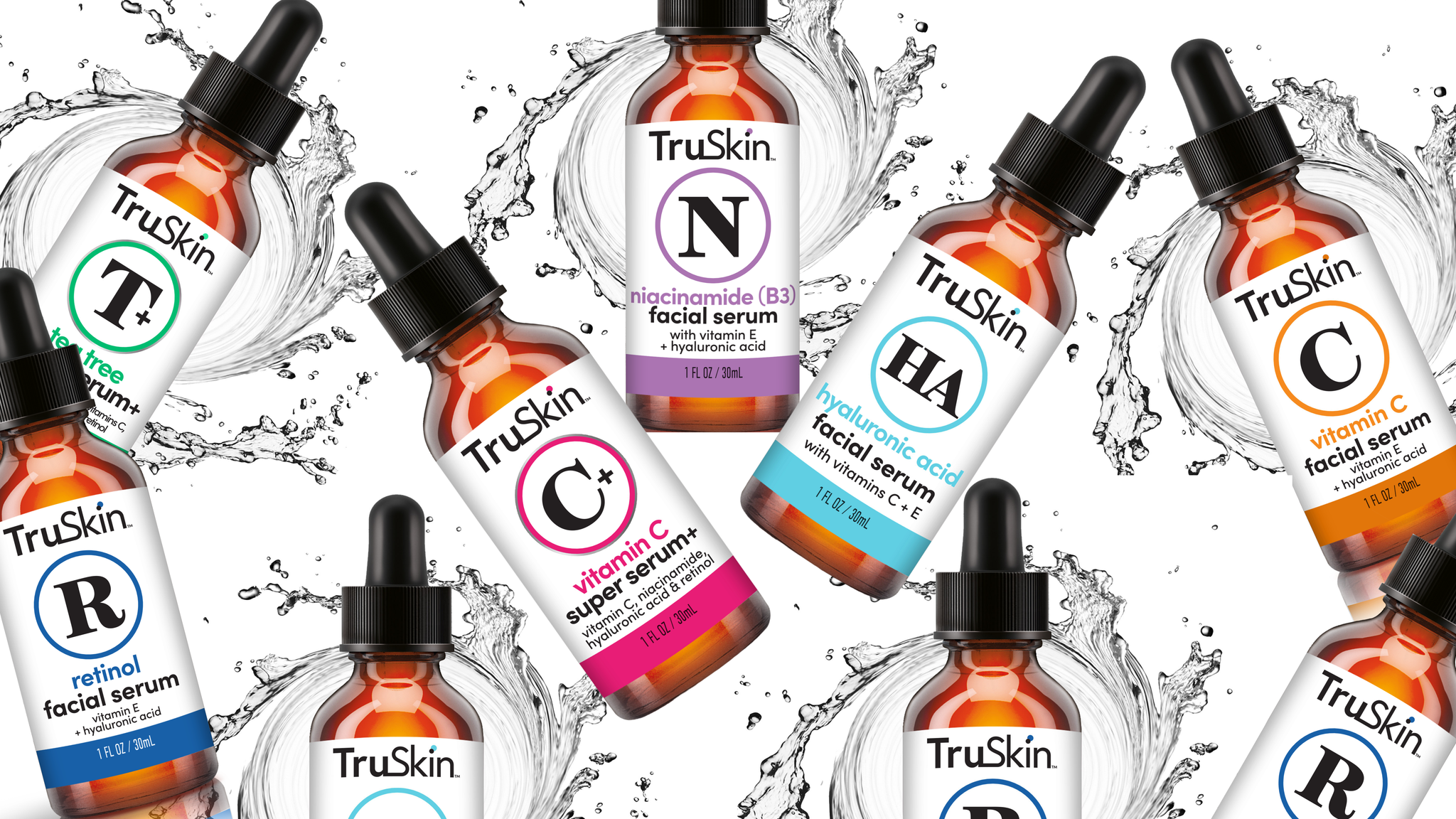
True Radical Honesty From Our Community
What To Do If You Hate Those Fine Lines Around Your Lips
Read MoreAdvice for all of your skin care needs
- all articles
- Acne
- Anti-Aging
- Collagen
- Combination Skin
- Company Announcements
- dry skin
- Exfoliation
- Eye Care
- Facial Redness
- Grooming
- Holidays
- Hyaluronic Acid
- Niacinamide
- Oily Skin
- Retinol
- Sensitive Skin
- Skincare
- Skincare Guide
- Skincare ingredients
- Skincare Routine
- Skincare Tips
- Sun Protection
- Toner
- Vegan Skincare
- Vitamin C
- view all
- Acne
- Anti-Aging
- Collagen
- Combination Skin
- Company Announcements
- dry skin
- Exfoliation
- Eye Care
- Facial Redness
- Grooming
- Holidays
- Hyaluronic Acid
- Niacinamide
- Oily Skin
- Retinol
- Sensitive Skin
- Skincare
- Skincare Guide
- Skincare ingredients
- Skincare Routine
- Skincare Tips
- Sun Protection
- Toner
- Vegan Skincare
- Vitamin C
-
From classic cucumber slices to the latest beauty tool sweeping Instagram, it’s time to take action against your unwanted eye baggage.
What is it with puffy eyes? Sure, they might not be your biggest skincare concern – frown lines and hormonal breakouts can fight for that crown – but waking up with bags under your eyes that would put the Kardashians’ weekend luggage to shame is not how we like to start the day.
Like many skin issues, there are a number of reasons you might be blighted by under eye bags. Think genes, lack of sleep, allergies and smoking. But one thing’s for sure, puffy eyes become much more common as you age. How so? Because skin becomes looser thanks to a lack of collagen, while supporting tissues and muscles around your eyes weaken, allowing fat and fluid to accumulate.
OK, so that’s the bad news. But it’s not all doom and bloom because there are countless ways you can quickly and simply improve bags under your eyes...
1. Invest In A Depuffing Eye Treatment
Skincare is a very personal thing and if there’s one product that consistently splits opinion, it’s eye cream. If you’re a bit of a cynic in this department, hear us out for a minute. Sure, regular moisturizer is just about passable for the skin around your eyes. Until it’s not. And the reasons are simple. The skin in this area is way thinner and more fragile than the skin on the rest of your face which makes it extremely susceptible to the visible signs of aging such as lines, wrinkles and sagging. It also has fewer sebaceous glands, so it can quickly feel dry and irritated unless it’s looked after. Then there are more specific eye issues like dark circles and bags – both of which don’t need to be addressed on the rest of your face.
This is why a specific eye treatment – one that’s been carefully created to deal with issues around your eyes – is so important.
When it comes to reducing eye bags, look for ingredients like caffeine, licorice, cucumber, hyaluronic acid and green tea which all help to hydrate the skin and reduce puffiness. Both Hyaluronic Acid Eye Cream and Peptide Eye Gel are also formulated with an ingredient cunningly called eyebright. This is a herbal extract that contains tannin to naturally tighten and refresh the skin while helping to reduce inflammation.
Apply your eye treatment to cleansed skin every morning and night and use your ring fingers to tap a small amount around both eyes. Using your ring fingers rather than your forefingers lessens the amount of pressure you put on your skin which reduces dragging. Meanwhile, the gentle tapping motion helps encourage lymphatic drainage.
2. Chill Out
One of the most effective and cheapest ways to instantly reduce puffiness is to apply something cold over your eyes. Cold temperatures make your blood vessels contract which reduces blood flow and immediately reduces swelling and inflammation. It’s simple science.
Of course, you could place two teaspoons (taken straight out of the refrigerator), a couple of cucumber slices or even some cold, used teabags over each eye for 10 minutes. These will all do the job nicely. But, if you love to embrace beauty tools, you might want to try out some facial ice globes.
Ice globes are a little bit like jade rollers but, as their name suggests, they have balls on the ends and are designed to be kept in your fridge or freezer. They can be used over your entire face to minimize inflammation and puffiness, but they’re particularly awesome for the eye area as their globe-like shape makes them easy to negotiate around the orbital bone. Use them in the morning to help waken up tired, puffy eyes, but be sure not to press too hard as this could drag and damage your skin. A gentle touch is all you need.
3. Be A Better Sleeper
Puffy eyes can be the result of many things, but more often than not poor or not enough sleep are the major culprits. The exact science behind this is kind of hazy but a lack of sleep causes the skin around your eyes to become dry and irritated, so there’s that. It also dilates the blood vessels which increases blood retention, and increases your levels of cortisol which makes your skin retain water.
The answer is simple. Get. More. Sleep. The American Sleep Association recommends between seven and nine hours. Not only that, but try to optimize any shut-eye you do get by sleeping on your back with your head slightly raised. Sleeping on your back helps reduce friction and any consequent inflammation and irritation to your skin from your pillowcase, while keeping your head elevated reduces fluid retention.
4. Embrace In A Little Gua Sha Therapy
You may have seen gua sha crystals popping up on your Insta feeds over the last year or so, but this ancient Chinese therapy has been around for hundreds of years. Using flat, smooth crystals like jade or rose quartz to massage your skin, gua sha is known to help remove a build-up of lymphatic fluids from the face.
To specifically work on puffy eyes, you basically hold your crystal almost flat against cleansed skin, then sweep it under your eye and out to your temple area. Repeat this three or four times, then do the same thing on the other eye and finally repeat the whole process above each eye, working just underneath your brow area. For even better results, always apply eye cream first.
5. Drink More Water, Eat Less Salt
While drinking water doesn’t directly hydrate your skin, if your body is dehydrated it will hold on to all the fluid it can, making your eye bags ten times worse. This means it’s super important to drink plenty of fluids. According to the National Academies of Sciences, Engineering and Medicine, a healthy adult female should consume around 2.7 liters of fluids every day, while men need around 3.7 liters. That may sound like a lot, but some of this will come from your food, with 80 percent being required from drinks like water, milk, juices and herbal teas. Still confused? Then go for eight glasses a day - it's much easier to remember!
One last thing before we go: try to reduce the amount of salt in your diet. Salt is just as dehydrating to your body as a lack of fluids because excess sodium causes it to retain water. This is bad news not only for puffy eyes, but for bloating as well, so decrease your salt intake, especially in the evenings. Fancy a cheeky packet of Cheetos before bed? Nope.
Full-Proof Remedies For Puffy Eyes
read more -
Glowing skin is a sure sign your complexion is happy. But what about when things don’t look or feel as good as you’d like? Chances are your routine could be the very reason your skin is having a mini meltdown…
Happy skin is something everybody strives for. And if only we were all blessed with the type of complexion that permanently behaved itself and looked downright perfect. But life’s not like that – no matter how famous you are or how much money you throw at your skin. Call it Murphy’s law if you like, but as soon as you accept that flawless skin is rarely achieved, the happy we know you (and your skin) will be.
That being said, while you can’t change your genes or suddenly transform your skin type from oily to normal overnight, what you can do is give your skin its best shot at happiness by ensuring your skincare routine is on the right path.
As you know, a great routine consists of gentle cleansing, an antioxidant treatment, regular moisturization and broad-spectrum sun protection. Then there are all the added extras like toner, exfoliation, extra hydration and eye treatments. Reckon you’ve got these down to a tee? Well, we hope that’s true. However, your skin might think otherwise and if it’s showing signs of grief – redness, itching, dry patches, breakouts etc. – chances are, you’re somehow upsetting your skin’s important barrier function. Let’s have a look into that a bit more…
Skin Barrier 101
Your skin has three main layers. The lowest is the hypodermis, followed by the dermis and on the very top, the epidermis. Each of these layers is split into even more layers which are super complex and all play a very important part in the health of your skin and body.
Right at the top of your epidermis is the uppermost layer, the stratum corneum, otherwise known as your skin's barrier. The stratum corneum is kind of like a brick wall of around 20 layers of cells, held together by essential lipids such as ceramides, cholesterol and fatty acids. This brick wall is your body’s first line of defense against the outside world and works hard to protect you from the slings and arrows of everyday life like pollution, toxins and chemicals. It also stops TEWL (transepidermal water loss) to retain the right balance of moisture in your skin and help keep it soft, supple and healthy.
Sounds great, doesn’t it? Yes, in theory. it is. However, your skin’s barrier naturally weakens with age, a cruddy skincare routine and poor lifestyle choices. And if your barrier is not functioning to the best of its abilities, moisture can escape from the surface of your skin far too easily – bad news for things like lines, wrinkles, dehydration, sensitivities and irritation. It also means your skin becomes more sensitive to things like active skincare ingredients and other environmental irritants.
So, how can you ensure your skincare is barrier-friendly and your complexion is in a much happier place?
5 Simple Ways To Avoid Upsetting Your Skin
1. Always Perform A Skincare Patch Test
One of the most vital, and often overlooked ways to ensure everything you put on your skin is a-okay is to patch test it first. We can see you rolling your eyes, but hold on there because your skin is a very delicate organ and there’s always the possibility of it not liking a certain ingredient in your skincare.
The worrying truth is that other than color additives, cosmetic ingredients don’t have to be tested or approved by the FDA to be allowed into a beauty product. Scary huh? Of course, most reputable manufacturers (us included) ensure that everything is safe when used correctly, but still, that’s a worrying thought…
Your only option, therefore, is to test a product on a discreet area of skin and leave it for at least 48 hours before using it properly for the first time. Not sure how to patch test? We can help with that right here.
2. Go Slow With Your Active Ingredients
Piling on vitamin C, retinol, glycolic acid and anything else you can put your hands on is a recipe for skin barrier disaster. So, go steady. Check all of your skincare labels and write down any active ingredients you come across. Actives include any ingredient that has been proven to change the skin in some way – whether it be to improve acne, discolorations, dryness, fine lines or wrinkles. Think AHAs, BHAs, antioxidants, retinol, urea, hyaluronic acid and so on.
Once you’ve made your list, have a look at it and make a note of any major repetitions and how your skin is feeling right now. If your skin feels red and dry, for example, and you notice every single product in your regime contains some kind of exfoliating acid, think about ditching one or two of these products for more calming, moisturizing options.
Similarly, you shouldn't need to apply more than one serum, so if you're doubling up, well, stop that. All of our serums have been formulated with at least one active ingredient, but they’ve been carefully blended to cause as little irritation to your skin barrier as possible. Niacinamide Facial Serum, for example, contains vitamin E and hyaluronic acid as well as strengthening niacinamide, so it’s the perfect choice for a healthy barrier function.
3. Don’t Double Cleanse
Double cleansing is fine if you wear tons of makeup or have oily skin that rarely feels clean after a single cleanse, but for most of you, we think it’s kind of pointless. Worse than that, it can strip away all of your essential oils and fatty acids which disrupts your barrier function and can cause long-term dryness, dehydration and irritation.
Instead, gently cleanse your skin morning and night with Vitamin C Brightening Cleanser to wash away impurities without sucking your skin dry. Massage it gently over moist skin and rinse with lukewarm, but never hot water.
4. Be Mindful Of How Much You Exfoliate
Hands down, one of the most common skincare sins is to over exfoliate. And this is a big mistake for your skin’s moisture barrier. Sure, exfoliation is great for boosting cell turnover and ensuring a radiant glow, but too much strips your protective barrier and is a one-way ticket to red, inflamed, excessively dry skin. Which is probably not what you were hoping for when you embarked on your kick-ass exfoliation regime, right?
If your skin is particularly unhappy right now, pare back on any kind of exfoliation – and yes, that means everything from scrubs and cleansing brushes to glycolic and lactic acid treatments. Stay away from these for at least 10 days then slowly introduce one form of exfoliation into your routine just once or twice a week. Cleansing using a soft facecloth is a great way to reintroduce light exfoliation into your life. We’re also big fans of glycolic acid so try our Ocean Minerals Super Toner which contains peptides and MSM to strengthen and rebuild your skin.
5. Moisturize Every Morning & Night
Never, we repeat, NEVER forget to moisturize your skin twice a day. Hydration is the absolute key for rebuilding and strengthening your skin’s barrier, so, even if your skin is oily, you need to apply a hydrating moisturizer after cleansing, toning and treating your skin to lock in moisture and stop water from evaporating from the surface.
When choosing a great moisturizer to support your barrier function it’s all about the right ingredients, and a truly balanced and effective moisturizer has to include at least two of three types of ingredient. 1. A humectant. 2. An emollient. And 3. An occlusive.
Humectants such as glycerin, aloe and hyaluronic acid draw water into the skin like a sponge; emollients like jojoba oil and squalane soften the skin and smooth over cracks, while occlusives like shea and cocoa butters form a physical barrier on the surface of your skin. Our awesome trio of moisturizers (Vitamin C Brightening Moisturizer, Deep Hydration Night Cream and Retinol Moisturizer) all contain a fabulous combination of humectants, emollients and occlusives. Win. Win. Win.
Finally, Don’t Expect Your Skin To Cheer Up Overnight
Healing your skin barrier isn’t something that can be achieved with the click of your fingers. Far from it. It’ll more likely take somewhere between two and four weeks to truly see stronger, happier skin.
Patience is a virtue, people.
Is Your Skin In Its Happy Place?
read more -
Turns out, vitamin C really IS the bright stuff.
Summer’s gone and fall is in full swing. Now, we have nothing against this time of the year (falling leaves, indoor fires, red wine Sundays, bliss) but isn’t it annoying when your skin lacks that certain glow it seemed to naturally emanate when the sun was out in full force? And we’re not talking about craving super tan skin that, in all honesty, has been damaged by the sun and will age you up faster than you can say ‘pass the SPF.’ No, we mean the feeling and look your skin has when that warm light is just right. You know where we’re coming from, yes?
Well, just because the days are getting grayer, this doesn’t mean your skin has to follow suit. And neither do you need to spend an extra hour on your skincare routine morning and night just to get your glow on. As it happens, just one ingredient can give your skin the natural radiance it deserves.
Say hello to vitamin C.
Otherwise known as l-ascorbic acid, topical vitamin C is a super potent skincare ingredient that works hard to protect, brighten, strengthen and rejuvenate a tired, dull complexion. It often gets a bad rap by skincare cynics because pure vitamin C is a tricky customer when you apply it to your skin. It can be a tad powerful for some skin types, is highly acidic and it breaks down easily on contact with your skin. Not great news, in case you were wondering.
So, why do we rate it so much? Because, l-ascorbic acid isn't the only vitamin C option available. In fact, there are some awesome derivatives such as sodium ascorbyl phosphate (SAP) which are infinitely more superior than the pure stuff. SAP is a salt version of pure vitamin C and much gentler (but no less effective in the long-term) on your skin. It’s also more stable when it comes into contact with light, air and water which helps it maintain its potency for way longer. Ever wondered why our vitamin C products look a little cloudy? Well, this is due to the salty nature of SAP – kind of like when salt is dissolved in water. Light bulb moment.
 So, how exactly does vitamin C work when it comes to brightening your skin and giving you that gorgeous, glowy feeling? Buckle up, here’s the science bit…
So, how exactly does vitamin C work when it comes to brightening your skin and giving you that gorgeous, glowy feeling? Buckle up, here’s the science bit…1. Vitamin C Is A Powerful Antioxidant
Just like vitamin E, retinol and hyaluronic acid, vitamin C is a potent antioxidant. Antioxidants are super important for the look, feel and health of your skin because they fight free radicals which are created in your skin thanks to external lifestyle and environmental triggers like smoking, alcohol, pollution and exposure to the sun. When free radicals form in the skin, they do a real number on important proteins, DNA and fatty acids, causing all manner of damage which shows up on the surface of your skin by way of lines, wrinkles, dark spots, poor texture, uneven skin tone and sagging.
Thankfully, antioxidants are your life-saving Batman to those free radicals' evil Joker: battling away to stop their onslaught of harm to your skin. And as long as you include plenty of antioxidants in your diet and your skincare, you should come out on top.
As antioxidants go, vitamin C is one of the most well-studied and proven in terms of visible effects on your skin and, according to experts, applying it topically can be 20 times more potent than taking it orally.
2. Vitamin C Inhibits Melanin Production
More good news: vitamin C is not a one-trick pony in its bid to help you achieve a brighter complexion. As well as its ability to quash free radical damage (otherwise known as oxidative stress), vitamin C also inhibits melanin synthesis by decreasing the production of an enzyme called tyrosinase.
Bear with us for a second while we get a little technical.
As you know, melanin is the pigment that gives your skin its unique color. Same for your eyes and hair. When you’re exposed to the sun, melanin production ramps up in a bid to protect your skin against UV damage. This makes your skin look darker and tan. However, melanin production can also go awry, causing your skin to become patchy and uneven-looking. These dark or sun spots are a type of hyperpigmentation called solar lentigines.
Now, back to tyrosinase.
Tyrosinase is an enzyme that catalyzes the production of melanin, so by interfering with tyrosinase production, topical vitamin C simultaneously hampers the amount of melanin in your skin, therefore helping to fade existing dark spots AND reducing the likelihood of you developing new ones.
We told you it was good stuff.
3. Vitamin C Acts Like A Mild Exfoliator
Vitamin C doesn’t exfoliate your skin in the traditional way like scrubs or alpha hydroxy acids. However, it does promote cell turnover which has a similar end result.
Skin has a natural way of shedding, a process called desquamation. On average, the life cycle of an adult skin cell is around 28 days, in which time it forms, matures, dies and sheds. As you get older, however, this life cycle becomes sluggish, often slowing down to as much as 90 days as you reach your 60s. The result is that skin starts to look less radiant – because dead skin cells don't shed as easily, causing dullness and a tired-looking complexion.
This is why boosting cell turnover through ingredients like retinol and vitamin C, or exfoliation techniques like facial scrubs and AHAs is so important as you get older and skin becomes less vibrant and youthful-looking.
How To Embrace Vitamin C In Skincare
To benefit most from the glow-inducing powers of vitamin C, a facial serum is 100 percent the way to go. Facial serums have a small molecular structure which allows them to deliver ingredients to your skin way quicker and much more effectively than other skincare formulations. And that’s a scientific fact.
Because we love vitamin C so much, four of our six serums contain SAP, our favorite form of vitamin C. Of course, if you’re a purist, you can’t go wrong with the momma of the C-gang, our original and best-selling Vitamin C Serum For Face. This fan favorite and current holder of almost 90,000 ratings on Amazon combines vitamin C with vitamin E and hyaluronic acid to help you reinstate the radiance you deserve. Shout out also to our awesome Vitamin C Super Serum+ which combines vitamin C with retinol to hit the signs of aging where it hurts.
Check out our full range of facial serums and skin care kits, right here.
 We also formulate vitamin C into our Brightening Cleanser, Brightening Moisturizer and Deep Hydration Night Cream, so you really can take it up a notch and go for it across your whole regime if that’s your skincare jam.
We also formulate vitamin C into our Brightening Cleanser, Brightening Moisturizer and Deep Hydration Night Cream, so you really can take it up a notch and go for it across your whole regime if that’s your skincare jam.Just remember, always patch test any new product when you first try it out. SAP is very well tolerated, but like most active ingredients, it’s pretty powerful and isn’t for everyone. Always try a small amount on a discreet area of skin and leave it for 48 hours to test for a reaction before using it on your whole face. And we don’t just say this for fun: it’s important, OK?
Now, get glowing, you beautiful people.
Why Vitamin C Is The Answer To A Year-Long Summer Glow
read more -
What can you do to counteract dry skin and the flakiness, itching and irritation that often comes as part of the package? Well, we believe what you put on your skin can make a real, difference…
If you have dry skin you’ll know that finding an awesome moisturizer is like discovering your perfect hairdresser. A veritable ‘eureka moment.' But not an easy one to accomplish, that’s for sure. So, why is this the case? Well, it’s confusing business. Firstly, skincare ingredients come and go thanks to technology, trends and the opinions of influencers and A-listers. Remember when snail slime was the future of ageless skin? Yeah, it didn’t last. Also, dry skin can be sensitive to certain ingredients, taking umbrage to the likes of synthetic fragrances, sulfates, parabens and the like, making it hard to find products that don't make your skin sting or become irritated.
This is why we believe it’s super important to know which ingredients to look out for when moisturizing dry skin. Not the fleeting ones that don’t stand the test of time (here's looking at you again, snail slime), but the tried, tested and trusted ingredients that derms have been recommending for decades. Because a) they work and b) well, they work.
But first things first, let’s talk about dry skin…
What Is Dry Skin?
Dry skin, dehydrated skin: same difference, right? Wrong. Dehydrated skin is a temporary condition that any skin type (yes, even oily) can experience and occurs when skin is lacking in water. Dry skin, however, is a whole other ball game. Dry skin is a true skin type like oily, combination and the elusive ‘normal’ skin and it means your skin is lacking in natural oils, NOT water. This dryness is likely to affect your entire body and it’s something you’re born with and will live with your whole life. Sure, it may improve or worsen depending on things like the season, your age or the time of the month, and yes, you can relieve dryness with great skincare products, but all in all, dry skin is for life.
How To Moisturize Dry Skin
Let’s get one thing straight, moisturizing ingredients and hydrating ingredients are not one and the same. Hydrating ingredients add water (hydration) to your skin and include the likes of hyaluronic acid, glycerin and aloe vera, whereas moisturizing ingredients are those that lock water into the skin by providing a protective layer on the surface to help prevent transepidermal water loss (TEWL). Moisturizing ingredients are the most important for dry skin types, but often dryness and dehydration come hand in hand, so a great skincare kit should always include a combination of both.
Today, however, we’re concentrating on the best moisturizing ingredients. And in no particular order, here are our top five…
1. Ceramides
Ceramides are fatty acids that make up around 50 percent of your skin’s composition and are found in the skin’s protective barrier, the stratum corneum. Ceramides are super important to the health of your skin because they act like glue to hold your skin cells together, keeping moisture in and irritants out. Kind of like your body’s own natural moisturizer. Of course, like many good things in life, you lose ceramides as you age. Your levels also take a hit from things like cold, dry air; a poor diet and harsh skincare products that strip your skin of oils.
This is why ceramides are up there as some of, if not the most important ingredients for strengthening your skin’s barrier function and simultaneously moisturizing dry skin.
2. Palmitates
Just because ingredients like ethyhexyl, cetyl and ispopropyl palmitate are tricky to pronounce (and even harder to spell!), this doesn’t make them the bad guys. Far from it. In fact, these palmitates are extremely useful for treating and conditioning dry skin. They come under the umbrella of emollients which are types of ingredients (whether natural or synthetic) that soften and moisturize dry skin by filling in and repairing cracks on the surface to help prevent water loss and keep your skin healthy and free from irritation. Not to be sniffed at, people.
3. Plant Oils
We’re major fans of botanical oils like coconut, jojoba and sunflower for their natural ability to work wonders on all skin types. Like palmitates, they’re super effective emollients, but some oils also have occlusive properties which is an absolute must for dry skin.
Occlusives work by leaving a thin coating on the top layer of your skin which traps in water and other hydrating ingredients, so your skin can make the most of all that moisture and nourishment all day long. Rich oils like coconut and olive can feel a little heavy if you have oily or acne-prone skin. However, they’re awesome for dry or irritated skin whose barrier function needs a little helping hand.
Plant oils are also rich in nutrients and antioxidants, so they’re great for protecting your skin from oxidative stress while strengthening and repairing your skin. Big win.
4. Shea Butter
As butters go, shea is top of the class.
Shea butter is a fat that’s extracted from the nut of the African shea (or karite) tree. Not only is it rich in fatty acids like stearic, oleic and lineoleic which gives it outstanding emollient powers, but shea butter is also an anti-inflammatory making it a beauty for healing a compromised barrier function.
Unlike cocoa butter which can be too rich for some skin types – especially on the face – shea butter is light, easily absorbed and non-comedogenic which means it’s less likely to clog your pores and cause breakouts. But don’t think this makes it any less effective when it comes to moisturizing dry skin. Shea butter is a real winner and is also packed with vitamins and anti-inflammatory compounds to further repair damaged skin. It's so good, it may even help soothe and treat eczema.
5. Vitamin E
Often seen on skincare labels as tocopherol, tocopheryl acetate or alpha-tocopheryl acetate, vitamin E is one of our favorite ingredients and up there with the likes of vitamin C and retinol as a must for any successful regime. Why is it so great for dry skin? Well, it’s an anti-inflammatory and an antioxidant so helps repair, soothe, protect and heal the skin’s delicate barrier function. But what’s most impressive is that it has a smart way of combining both humectant and emollient qualities all into one. This means it can draw water into your skin like a sponge, AND hold it there. Some experts believe it has the ability to retain moisture for up to 16 whole hours. Wowza.
An oldie, but a real goodie.
5 Ingredients Dry Skin Can’t Live Without
read more -
Summer’s officially over, folks. So, there’s no better time to add a hard-working face serum into your skincare routine. Frankly, it would be rude not to.
Face serums are mysterious little characters. Often moisturizing, but not really moisturizers; sometimes oily, but definitely not face oils. Mind. Officially. Blown.
But the thing is, a face serum is probably the most important and hard-working product you could have in your skincare arsenal. Sure, it’s not 100 percent vital in terms of keeping your skin clean, moisturized and protected from the sun (they’re the absolute basics for healthy skin, btw). However, if you want to do more than just the bare minimum for your skin and want to keep it looking its best for as long as possible, you simply must include at least one serum in your daily regime.
Not sure where to start? Then allow us to fill you in on all the essential deets. Because summer’s gone, fall’s here and now’s the perfect time to up your skincare game.
What Are Face Serums?
A face serum is a light, water- or gel-based skincare product that’s been formulated to help treat specific concerns or skin conditions like dullness, dehydration or aging. Due to their small, molecular makeup, serums are extremely fast-absorbing and can penetrate deep into your skin. This is why they’re such a great tool for delivering active ingredients exactly where your skin needs them.
How Do Serums Differ To Moisturizers?
Unlike serum, a moisturizer’s main job is to, well, moisturize. Sure, it might contain antioxidants, exfoliating acids and all manner of other skin-loving ingredients as added extras but at the end of the day, a moisturizer’s ability to moisturize your skin is everything. A moisturizer, therefore, is richer than serum and usually contains some kind of emollient or occlusive ingredient (think shea butter, jojoba oil, coconut oil etc.) to create a barrier and stop moisture from escaping from the surface of your skin.
Serums, on the other hand, are lighter and contain much smaller molecules than their moisturizing cousins. Of course, serums can contain hydrating ingredients to help your skin retain moisture, but they don’t often contain occlusive or emollient ingredients (think shea butter, coconut oil etc) which form a seal on the surface of your skin. If they did, they wouldn’t retain such a lightweight composition and they wouldn’t absorb into your skin in such a timely, effective manner.
Is A Face Serum Right For Me?
Probably… but who knows? There are so many different formulations around, there’s bound to be one to suit your needs. However, the most important thing is to always patch test any new serum before applying it all over your face and neck for the first time.
To perform a patch test, apply a small amount to a discreet area of clean skin either behind your ears, inside your elbow, on your wrist or on the side of your neck. Then leave it for a good 48 hours to check for any negative reactions. If everything’s a-okay after this time, you’re good to go. Even mild reactions such as redness or a little tingling that settles down after an hour is fine – this is just those awesome ingredients getting to work. However, anything that’s continually uncomfortable or painful is a major red flag. If you experience a bad reaction like this, immediately cleanse your skin and don’t use it again. And if symptoms continue to get worse, always seek advice from a skincare expert.
How Do I Choose A Serum To Suit My Skin Concerns?
Most formulations will feel similarly lightweight and watery or gel-like, so that’s not really a factor. Instead, it’s all about those active ingredients inside.
Here are five awesome ingredients to look out for in a face serum, depending on your skin’s concerns:
1. Hyaluronic Acid
Great For: All skin types.
Hyaluronic acid is one of the best ingredients for hydrating your skin. It’s known as a humectant which means it works like a sponge to draw water to the surface of your skin.2. Retinol
Great For: Aging or acne-prone skin.
Retinol is seen as the best of the best when it comes to boosting cell turnover and therefore working on everything from fine lines and wrinkles through to dark spots and pimples.3. Vitamin C
Great For: Dull skin.
One of the most studied antioxidant in skincare, vitamin C protects your skin from free radical damage and inhibits melanin production to boost your skin’s glow factor and improve hyperpigmentation. 4. Niacinamide
4. Niacinamide
Great For: All skin types, particularly sensitive.
Otherwise known as vitamin B3, niacinamide is a gentle, but effective antioxidant. It works really well with the natural substances in your skin to improve tone, texture and the visible signs of aging.5. Salicylic Acid
Great For: Oily or combination skin.
Salicylic acid is an oil-soluble chemical exfoliator that gets deep into your pores to reduce excess sebum, reduce acne breakouts and boost cell turnover.How & When Should I Apply My Face Serum?
The general rule with skincare is that lighter products should always be applied first so they don’t have to fight with the heavies to reach the surface of your skin. This means, therefore, that serum should always be applied before moisturizer, to cleansed, toned skin. Then you can follow with a face oil and finally, that all-important, never-to-be-forgotten sunscreen (in the morning, of course!).
When it comes to your application technique, NEVER place the serum dropper directly onto your face as this can transfer oil and bacteria from your skin straight back into the bottle. Instead, apply one or two drops of serum onto clean hands, then apply it over your face and neck. Pat it gently all over cleansed skin and don’t worry about massaging it in. This is totally unnecessary. Serums are light enough to absorb into your skin without your help.
All serums are different, but most can be applied every day. Oftentimes, however, two or three times a week is enough – especially with the super potent serums that really pack a potent punch. Just make sure you read your labels for full instructions so you don’t overload your skin and end up causing irritation.
Up Your Fall Skincare Game With An Awesome New Face Serum
read more -
Answer: yes… and no. Because things are rarely black and white in the wonderful world of skincare.
If you thought smoking, booze, no sleep and poor skincare were the root cause of skin aging, well, you’re not wrong. However, hands down the biggest skin ager and far worse than all those factors put together is the sun. According to the Skin Cancer Foundation, the sun is responsible for around 90 percent of external aging. Not 50, not even 70, but a phenomenal 90 percent.
This, as well as the far more serious risks of skin cancer, is the reason we constantly chirp on about the importance of wearing sunscreen and doing everything you can to protect your skin from the sun. And not just in the summer months, but all year long.
Even the most prudent of you, however, will experience some form of sun damage as you age. Because: life. So, what exactly does sun damage look like – other than the obvious red, sunburnt skin? And once it's there can you do anything about it?
Here’s what we know…
What Is Sun Damage?
In fancy terms, any skin damage caused by the sun is known as photoaging. It usually starts to appear after the age of around 20 because the harsh reality is every time you step foot outside, UV radiation hits your skin and causes some kind of harm.
Sun damage not only damages your blood vessels, DNA, collagen and elastin, but it sends your melanocytes (melanin-producing cells) wild, causing your skin to develop dark patchy areas called solar lentigines – or more familiarly known as dark, sun or age spots. Oh, and you know those freckles you think are cute after a day on the beach? Sun damage, right there.
Other signs of photoaging include fine lines and wrinkles, loose skin, sagging, dryness, spider veins and a ruddy complexion.
So, Can You Reverse Sun Damage?
Completely? No. Somewhat? For sure. What we mean by this is that while a lot of photodamage can be permanent, there are certain skincare ingredients and treatments available to help repair and soften lines, fade dark spots, tighten loose skin and reduce spider veins or a blotchy complexion.
In no particular order, here are three of our favorites…
1. Retinol
Oh retinol, how we love thee. One of the most trusted ingredients in skincare, retinol works by stimulating cell turnover and increasing collagen production which helps improve the color, tone and texture of your skin. By working on your skin at a deeper level than many other ingredients, retinol has the ability to combat almost all signs of photoaging. More specifically it can significantly decrease the visibility of lines, wrinkles and dark spots. Let’s have a group hug for that, please.
It can take a good few months for the effects of retinol to be visible, so you must be patient and consistent. And don’t worry if your skin looks kind of cruddy before it gets better. A little dryness and redness is what’s known as retinization – the process in which your skin is adjusting to the treatment. This should be mild and subside after a short period of time, so bear with it and you’ll be thankful in the long run. Of course, if any irritation is painful or long-lasting, you might need to slow it down a little. Apply your retinol treatment just two or three times a week, rather than daily, until your skin acclimates. Then you can build up again as your skin becomes more tolerant. You could also try a Retinol Moisturizer rather than a serum as moisturizing creams and lotions have a slower delivery system so are much gentler on your skin.
2. Vitamin C
Known at TruSkin HQ as the brightening powerhouse, vitamin C is a clever little antioxidant that mops up free radical damage and fades dark spots into the bargain. Sun-induced free radicals are a real issue when it comes to aging skin because they hunt down all the good proteins in your skin, breaking down collagen and causing all kinds of harm. The great news is you can minimize free radical formation by regularly applying a hard-working topical antioxidant like vitamin C. Our Vitamin C Facial Serum not only contains a stable form of vitamin C called sodium ascorbyl phosphate, but two other antioxidants to the tune of vitamin E and hyaluronic acid. Frankly, free radicals stand no chance.
It’s also worth noting that vitamin C contains properties that inhibit tyrosinase, an enzyme that generates melanin production. Erratic melanin is what makes your skin go patchy and dark from too much time in the sun, so by regulating it, you immediately help lessen the blow of dark spots and an uneven skin tone. Take that, sun damage!
3. Sunscreen
There’s no denying that prevention is way, WAY better than cure. After all, skin cells that have been subject to decades of sun exposure with very little sun protection could be so damaged, they’re no longer repairable. Therefore, the best way to reverse sun damage is to avoid it in the first place.
Obviously we don’t expect you to never leave the house again, but there are some simple things you can do to protect your skin from the damaging rays of the sun like seek shade and wear protective clothing. However, the most important trick you can employ is to apply sunscreen. Every. Morning.
When it comes to choosing sunscreen, look for a formulation that’s broad-spectrum which means it protects you from UVA as well as UVB radiation. Never go less than SPF 30 and apply it generously and often.
Professional Treatments For Reducing Sun Damaged Skin
If your sun damage is more serious, there are also some super effective, professional treatments available at your derm’s office. The American Academy of Dermatology (AAD) recommends chemical peels, laser treatments, IPL and microdermabrasion for addressing pigmentation issues, while fillers can restore lost volume and Botox is often a go-to for dealing with fine lines and wrinkles.
Speak to your skincare professional about any photoaging concerns you may have and they can recommend your best plan of action.
In the meantime, did we mention the importance of sunscreen?...
Can You Really Reverse Sun-Damaged Skin?
read more













